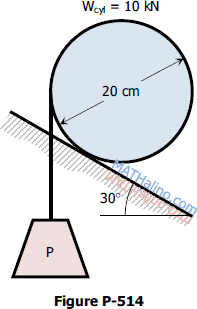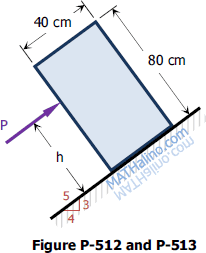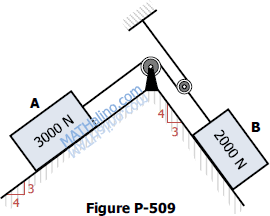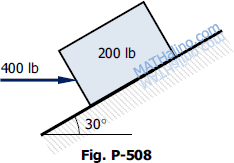Problem 516 | Friction
Problem 516
Referring to Fig. P-515 if the coefficient of friction is 0.60 and θ = 30°, what force P applied to B acting down and parallel to the incline will start motion? What is the tension in the cord attached to A?

- Read more about Problem 516 | Friction
- Log in to post comments




